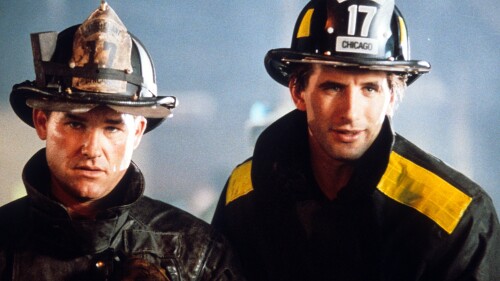From blazing infernos to daring rescues, Hollywood loves putting firefighters in the spotlight—but often gets the details hilariously wrong. For real-life firefighters, many on-screen portrayals are more fiction than fact, packed with firefighting myths and unrealistic heroics. This article breaks down five of the most cringe-worthy TV and movie moments that misrepresent what it truly means to battle blazes and save lives.
5. Buildings engulfed in flames, yet little smoke
Fire generates a lot of smoke. Like, a lot. Even fires in the smallest of rooms generate enough smoke to reduce visibility. Now take that fire and put it on the walls of the hallway, ceiling, stairs, furniture, bystanders, everything and yet our main character can still see across the room?
Give me a break. The only realistic fire scene would be a grey/green/black cloud of smoke and a faint orange glow. Nothing else is even remotely visible.
4. The dangerous hero
I know the public likes to think we go running into burning buildings. But we train to make careful decisions on when, where and how to enter an unsafe environment, thinking first of our own safety, then of the person needing our help. The save rate for folks who make unsafe decisions is remarkably low.
The macho, coat open, axe-in-hand character from “Backdraft” dies in the end, remember? And this isn‘t limited to the silver screen either.
Many TV firefighters, medics and rescuers have had sudden infections of “dangerous hero syndrome,” especially when their rescue appears to be a one-way trip.
Everything looks fine until the music changes, the rescuer mentions something about giving the job their all, then suddenly things get turned around and everyone makes it out. Well, gee whiz, gang, had they simply been careful and performed the rescue we could have skipped all that drama. At least the visibility was good.
3. Shocking asystole
There are three basic heart rhythms my 6-year-old daughter can recognize. They are good (sinus rhythm, meaning your heart is functioning normally), bad (ventricular fibrillation, or the disorganized firing of heart tissue, which is the immediate precursor of death) and worse (asystole, or no electrical activity at all).
The machine we use to treat heart attack victims only works on certain heart rhythms. Without being able to show you some charts, just understand that the machine doesn‘t restart your heart, but instead reorganizes chaos. If there is nothing to organize, the machine will not work.
When our TV hospital staff is sweating and calling out long complicated tests only to hear the monitor behind them go from a slow beeping to a constant tone, you might hear them call out, “Flatline! Shock him!”
We don‘t shock a flat line. Even worse is when they shock a normal rhythm, but hey, it‘s just actors doing what they‘re told to do by the writers — even if it is an egregious medical mistake.
2. Background fog nozzle
Many times in action movies, soon after the explosions, a fire engine will suddenly appear amongst the rubble, usually with a few police cars and an ambulance or two in attendance. These fire and rescue workers are placed in the background to let you know the dangers are being dealt with, but they’re most often there to add flashing lights. Hollywood loves those flashing lights.
In these scenes a lone firefighter will be standing with a hoseline, often on a pile of rubble, with a wide pattern fog on the nozzle, like you use to water the hydrangeas. He is there to put you at ease and focus on the hero instead of wondering where on earth the fire department is. Didn‘t they see the plane crash on the Vegas strip?
1. Every fire sprinkler scene ever filmed
This has to be the number-one biggest lie Hollywood has ever given the American people. Quick recap folks: No fire alarm is tied to the fire sprinklers.
There are stations that can activate sprinklers or extinguishers, commonly in restaurants, but pulling the little fire alarm hook in the lobby of the hotel will not set off the fire sprinklers. Not going to happen.
More importantly, yet ignored by the Screen Actor‘s Guild, is the fact that fire sprinklers are independent of one another. This means that setting one off does not set them all off.
Each fire sprinkler has a stopper in it that is melted at a different temperature. As the fire gets big, the plug melts away and water comes out. If the fire is in a closet, the sprinkler in the hallway will not be set off.
Relax. And please don‘t pull the fire alarm to try to activate it. I thought we covered that already?
More fire-themed entertainment:
This article, originally published April 2014, has been updated with additional resources.
















